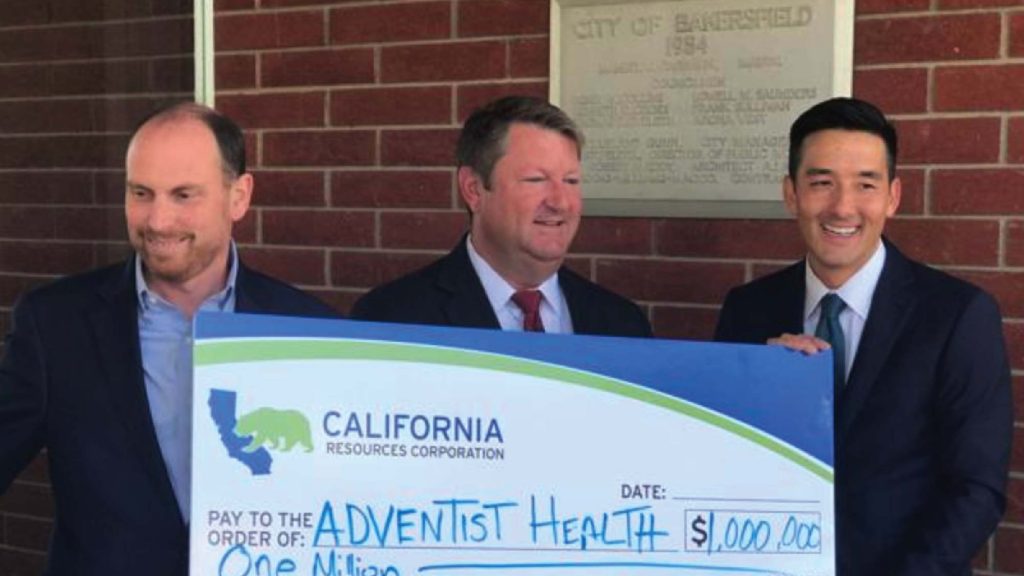If you’ve ever been to Santa Barbara, you’ve probably seen the joggers, the walkers, the cyclists, the surfers, the beach volleyballers and even the shoppers on State Street.
They’re constantly on the move, burning calories, trimming waistlines and enjoying every second of it.
In this coastal environment of great weather, pristine air, beautiful views and beautiful people, it’s simply easier to stay fit and healthy than it is in Bakersfield, where walking or biking to work in 105-degree summer temperatures while sucking unhealthful air like a Hoover, is likely not the path to inner peace and physical well-being.
So, how can Bakersfield find its own way to a Santa Barbara-like nirvana, while staying right here in the southern valley?
Enter the Blue Zones Project.
“Today, we’re embarking on another journey, a planning journey, that eventually will take us … down a new road, a new pathway toward well-being for all Kern County,” Kiyoshi Tomono, executive director of the Blue Zones Project Bakersfield, said Thursday from the steps of City Hall in downtown Bakersfield.
“This is truly a community effort,” Tomono said to the gathering of business leaders, city officials and news reporters. “And we are excited to say that Bakersfield is the newest Blue Zone community.”
The Blue Zones Project, Tomono said, is based on research by Dan Buettner, a National Geographic fellow and New York Times best-selling author who, during his extensive travels, identified five cultures of the world with the highest concentration of people living to 100 years or older. He named these places on the map “Blue Zones.”
The project incorporates Buettner’s findings in working with communities to make healthy choices easier through permanent changes to community environment or infrastructure, government policy and social networks.
“What is this secret sauce that allows people to live to be 100-plus — and not just live, but be healthy and live well and thrive?” Tomono asked.
“And the second part of that question was, ‘Can we re-create that same environment — or whatever that secret sauce is — in other places?'” The answer is yes, he said.
Tomono cited Buettner’s brother, Dan Buettner, who was at Thursday’s event.
“The folks that are living to 100-plus, it’s not because they pursued well-being, it’s because it ensued,” Tomono said.
“We’re not forcing kale on people.”
And it’s not about individuals focusing on the latest diet or fitness program. The vision is to focus on the entire community: home, schools, work environments, recreational spaces and more.
The question is, can eating well be made easier — until eventually, it becomes the normal choice, the natural choice, the only choice.
According to the data that’s already been collected, participating communities have seen double-digit drops in obesity and smoking rates, economic investment in downtown corridors, grant funding awards and measurable savings in health care costs.
This community-led initiative, Tomono said, will bring together worksites, schools, grocery stores, restaurants, faith and civic organizations as well as residents to implement the initiative.
“This is all evidence-based,” he said.
Shawn M. Kerns, executive vice-president and COO at California Resources Corp., said the local oil and gas company is donating $1 million to support the launch of Blue Zones Project Bakersfield.
“The Blue Zones approach to lifting the well-being at the population level for all members of our community closely aligns with CRC’s values,” Kerns told Thursday’s gathering.
The city of Bakersfield appears ready to help as well.
“Some folks call it a project. I’ve been calling it a movement. I think it’s also just a way of life,” Bakersfield City Manager Christian Clegg said of the project and the knowledge behind it.
The changes will not come overnight. It’s a longterm commitment that may involve sidewalks, pathways and new choices for healthy travel. It could mean finding a way to get healthier food into grocery stores and grocery stores into neighborhoods that don’t have one.
“The responsibility of health, I will point out, doesn’t just lie with the individual,” Clegg said.
It also lies with the community, and leaders within the community, to make sure healthy choices are available to all.
“As I noted, my family and I love it here in Bakersfield,” he said. “… We also acknowledge we have some work to do in facing some real tangible challenges around collective well-being.”
He spoke of areas of Bakersfield that are underserved, and he touched on public safety, too.
“We don’t think of public safety as the absence of crime,” Clegg said. “Public safety is the presence of well-being.”
And promoting well-being is at the center of the Blue Zones movement.
The goal, Tomono said, is really looking at three main components of the community: People, policy and places.
“Things like tobacco policy,” he said. “About how easy it is for kids to get cigarettes.
“How much sugar are kids getting in their school meals?”
By making small changes in policy or environments, he said, we can begin to positively affect the longterm health of the community.
Why Bakersfield?
“Almost 45 percent of our fifth-graders are obese,” Tomono said. “We have a diabetes rate that is far higher than the state average.”
People in this community are dying earlier, on average, than people around the world, he said.
Becoming certified as a Blue Zones community will be a five-year journey, Tomono said.
The rewards, he believes, will be worth the trip.





